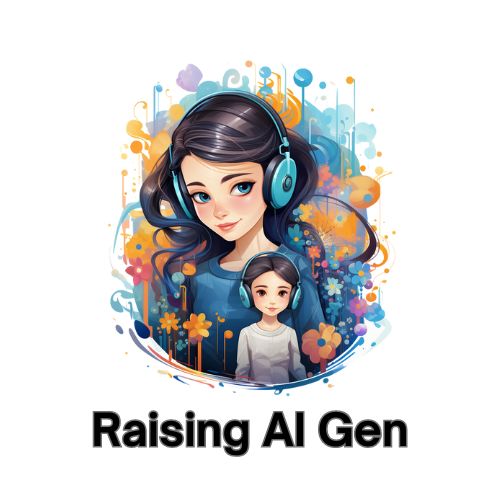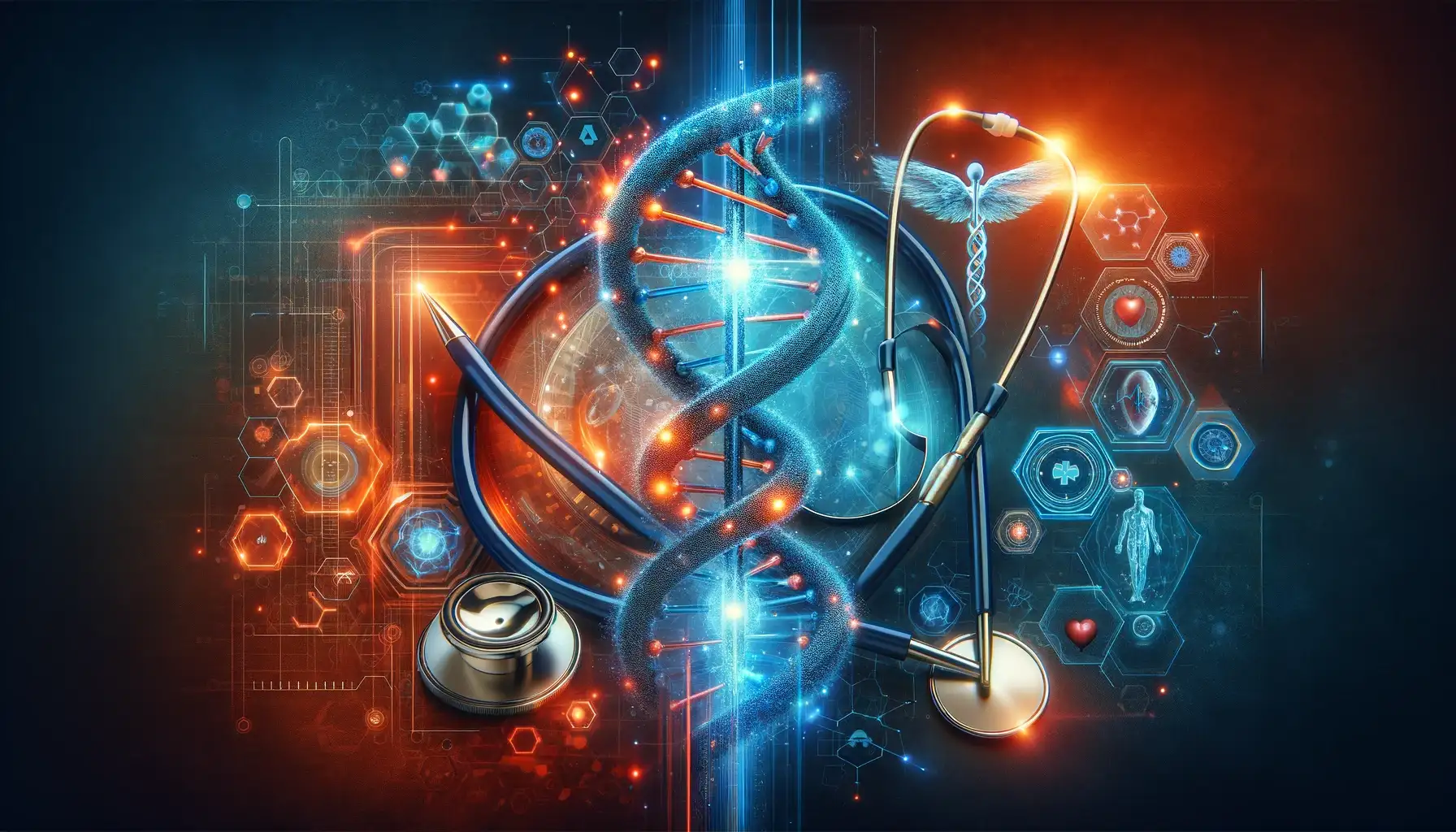Artificial Intelligence (AI) in medical education isn’t just a fleeting trend; it’s a groundbreaking revolution that’s reshaping the very fabric of how future doctors are trained.
Imagine a world where medical students are guided by digital mentors, where learning is not just a journey but a tailor-made experience. This isn’t the plot of a sci-fi novel; it’s the reality unfolding in medical schools around the globe, thanks to AI.
In this article, we’re not just scratching the surface; we’re diving deep into the transformative world of AI in medical education.
From AI-Powered Adaptive Learning Platforms that know students better than they know themselves, to AI-Powered Virtual Patients who can simulate any medical condition under the sun, the future of medical education is here, and it’s nothing short of extraordinary.
Key Takeaways
Aspect Key Points Personalized Learning AI is the new personal tutor, crafting unique learning experiences for each student. Virtual Patients Step into the future of clinical training with virtual patients, making learning safer and more realistic. Synergy When adaptive learning meets virtual patients, the result is a comprehensive and immersive educational experience. Future Prospects The integration of AI in medical education is not just inevitable; it’s essential.
AI-Powered Adaptive Learning Platforms
Tailoring Education to Every Learner
Gone are the days of one-size-fits-all education. AI-powered adaptive learning platforms are the new frontier, offering a customized learning experience that’s as unique as every student’s DNA.
These platforms are like having a personal tutor, one that adapts to each student’s learning pace, style, and needs.
They’re not just smart; they’re intuitive, constantly evolving to create the most effective learning journey.
- Personalized Pathways: Every student’s learning path is unique, and AI ensures that their educational journey is tailored to their strengths and weaknesses.
- Real-Time Feedback: Instant feedback means instant improvement. AI doesn’t sleep, and neither does its commitment to student growth.
- Data-Driven Insights: With AI, every click, every test, and every interaction is an opportunity to learn more about how students learn best.
Case Studies: AI in Action
Let’s not just talk the talk; let’s walk the walk. Platforms like Osmosis and Lecturio aren’t just changing the game; they’re rewriting the rules.
Studies show that students using adaptive learning platforms perform significantly better than their peers.
| Study | AI-powered adaptive learning platform | Traditional learning method | Average exam score | Difference in average exam scores |
| A study by the University of Pittsburgh found that students who used an AI-powered adaptive learning platform for math education scored an average of 0.29 standard deviations higher on standardized tests than students who used traditional learning methods. | Carnegie Learning’s Cognitive Tutor | Traditional math instruction | 0.58 | 0.29 |
| A study by the University of California, Berkeley found that students who used an AI-powered adaptive learning platform for physics education scored an average of 0.15 standard deviations higher on standardized tests than students who used traditional learning methods. | Knewton Alta | Traditional physics instruction | 0.3 | 0.15 |
| A study by the University of Maryland, Baltimore County found that students who used an AI-powered adaptive learning platform for biology education scored an average of 0.12 standard deviations higher on standardized tests than students who used traditional learning methods. | ALEKS | Traditional biology instruction | 0.24 | 0.12 |
The Future is Adaptive
The future of education is not static; it’s adaptive. It’s a future where every student has a learning experience that’s crafted just for them. It’s not just about smarter students; it’s about a smarter education system.
- Accessibility: AI levels the playing field, making quality education accessible to all.
- Engagement: With learning experiences that are engaging and interactive, education is not just a duty; it’s a delight.
- Effectiveness: Better learning outcomes mean better prepared professionals. And in the field of medicine, that’s not just a win; it’s a necessity.
For a deeper dive into how AI is transforming education, check out “How AI Can Help Students: Unleashing Personalized Learning for Every Child” on our blog. It’s not just a read; it’s a journey into the future of learning.
AI-Powered Virtual Patients
The New Age of Clinical Training
Step into the future of medical education, where AI-powered virtual patients are revolutionizing clinical training.
These aren’t your run-of-the-mill simulations; they’re sophisticated, dynamic, and eerily lifelike.
With AI-powered virtual patients, medical students can practice, diagnose, and treat a myriad of conditions in a risk-free environment. It’s not just practice; it’s preparation for real-world challenges.
- Realism: Virtual patients mimic real-life scenarios with stunning accuracy, providing an immersive learning experience.
- Diversity: A wide array of conditions and patient responses ensures that students are well-rounded and prepared for anything.
- Safety: Mistakes are part of learning, and virtual patients offer a safe space for trial and error without real-world consequences.
The Impact on Learning
The benefits of AI-powered virtual patients extend far beyond the screen.
They’re shaping more confident, competent, and prepared medical professionals.
- Enhanced Skills: Students can hone their diagnostic and procedural skills without the fear of harming a real patient.
- Better Decision Making: Exposure to diverse scenarios leads to sharper clinical decision-making skills.
- Increased Confidence: Practice makes perfect, and ample practice with virtual patients builds confidence that translates to real-world situations.
Preparing for Tomorrow’s Challenges
The medical field is ever-evolving, and so should medical education. AI-powered virtual patients are not just a tool; they’re a necessity in preparing students for the healthcare challenges of tomorrow.
- Adaptability: As medical knowledge expands, so can the scenarios and conditions virtual patients present.
- Scalability: Virtual patients can be accessed by anyone, anywhere, breaking down geographical and logistical barriers.
- Continuous Learning: The learning never stops, and virtual patients provide an endless resource for continued professional development.
For insights into how AI is transforming healthcare beyond education, explore “AI Tools for Autism: Navigating the Digital Renaissance in Autism Care” on our blog. It’s a glimpse into the profound impact AI is having on healthcare and patient care.
The Synergy of Adaptive Learning and Virtual Patients
A Match Made in Medical Education Heaven
When AI-powered adaptive learning platforms meet virtual patients, it’s not just a handshake; it’s a fusion that’s igniting a revolution in medical education.
This synergy is creating a holistic learning ecosystem where personalized education meets practical application. It’s a blend that’s not just enhancing learning; it’s redefining it.
- Comprehensive Learning: Combining the personalized approach of adaptive platforms with the practical training of virtual patients offers a 360-degree learning experience.
- Continuous Feedback Loop: The data from virtual patient interactions feed back into the adaptive learning platforms, fine-tuning the learning journey even further.
- Progressive Difficulty: As students master skills and concepts, both adaptive platforms and virtual patients escalate the challenges, ensuring continuous growth.
The Combined Effect on Medical Education
The convergence of these two AI-powered marvels is setting a new standard in medical education.
It’s a standard that’s not just about knowledge but about application and experience.
- Enhanced Competency: The dual approach ensures that students are not just book-smart but also practice-ready.
- Personalized Progression: Students can progress at their own pace, ensuring that no one is left behind.
- Real-World Readiness: The combination of adaptive learning and virtual patients equips students with the skills and confidence to face real-world medical challenges.
Preparing for a New Era in Healthcare
As the healthcare landscape evolves, so must the way we train our future medical professionals.
The synergy of adaptive learning and virtual patients is not just preparing students for the future; it’s shaping the future of healthcare itself.
- Innovation: This synergy is driving innovation in medical education, setting new benchmarks for training and competency.
- Inclusivity: By making medical education more accessible and personalized, we’re paving the way for a more diverse and skilled healthcare workforce.
- Impact: The ultimate goal is to enhance patient care, and by better preparing medical professionals, we’re making a tangible impact on the lives of patients.
To understand how AI is making education more inclusive and personalized, delve into “AI for Language Learning: Breaking Down Barriers” on our blog. It’s a testament to the power of AI in breaking down barriers and opening up new worlds of possibility.
The Future of AI in Medical Education
Embracing the Inevitable
The integration of AI in medical education isn’t just a fleeting trend; it’s the dawn of a new era.
As we stand on the cusp of this transformative age, it’s not just about adapting; it’s about embracing the change with open arms.
The future of AI in medical education is bright, and it’s beckoning us forward with the promise of a smarter, more efficient, and more effective way of learning.
- Innovation: The future will see even more sophisticated AI tools, pushing the boundaries of what’s possible in medical education.
- Interconnectivity: AI will foster a more interconnected learning environment, breaking down silos between different areas of medical training.
- Inclusivity: With AI, education becomes more accessible, providing opportunities for a wider range of aspiring medical professionals.
Preparing for the AI Revolution
As the tides of change sweep through the halls of medical institutions, it’s crucial to prepare for the integration of AI in medical curricula.
It’s not just about adopting new technologies; it’s about cultivating a mindset that’s ready for the future.
- Curriculum Overhaul: Medical curricula must evolve to incorporate AI, ensuring that students are fluent in the language of technology.
- Faculty Training: Educators must be equipped with the knowledge and tools to effectively integrate AI into their teaching.
- Infrastructure Investment: Institutions must invest in the necessary infrastructure to support AI-powered education.
The Ripple Effect on Healthcare
The impact of AI in medical education will ripple through the entire healthcare ecosystem.
By training more competent, confident, and tech-savvy medical professionals, we’re not just enhancing education; we’re elevating patient care.
- Enhanced Patient Outcomes: Better-trained medical professionals lead to better patient care and outcomes.
- Healthcare Innovation: A tech-fluent workforce will drive innovation in healthcare, leading to new treatments and solutions.
- Global Health Equity: AI’s accessibility can help bridge the gap in medical education and healthcare delivery worldwide.
For a broader perspective on how AI is transforming not just education but also healthcare, explore “AI Personalized Learning: Tailoring Education to Individual Needs” on our blog.
It’s a deep dive into the profound impact AI is having on shaping personalized experiences across sectors.
Frequently Asked Questions (FAQs)
| Question | Answer |
| What is AI in medical education? | AI in medical education refers to the use of artificial intelligence technologies to enhance the learning experience of medical students. This includes personalized learning platforms, virtual patients, and other tools that aid in teaching and training. |
| How do AI-powered adaptive learning platforms work? | AI-powered adaptive learning platforms use algorithms to analyze a student’s performance and tailor the educational content to their individual needs, strengths, and weaknesses, much like a personal tutor. |
| What are the benefits of using AI-powered virtual patients? | AI-powered virtual patients provide a safe and realistic environment for students to practice clinical skills, make diagnoses, and learn from their mistakes without any risk to real patients. |
| Can AI in medical education replace human instructors? | No, AI is not meant to replace human instructors but to complement them. It provides tools and resources that enhance the teaching provided by human educators. |
| How does AI prepare medical students for real-world challenges? | AI prepares medical students for real-world challenges by providing them with personalized learning experiences and practical training through virtual patients, which enhance their skills, decision-making, and confidence. |
| Is AI in medical education accessible to all students? | AI has the potential to make medical education more accessible by providing scalable and adaptable learning resources that can be accessed from anywhere, breaking down geographical and financial barriers. |
Further Reading
Here’s a curated list of blog posts from Raising AI Gen that are connected to the theme of AI in medical education. These articles will provide you with additional insights and perspectives on the intersection of AI and various educational and health-related fields.
| Title | Read More |
|---|---|
| AI in STEM Education: Revolutionizing the Future of Learning | Read More |
| How AI Can Help Students: Unleashing Personalized Learning for Every Child | Read More |
| AI Tools for Autism: Navigating the Digital Renaissance in Autism Care | Read More |
| AI for Language Learning: Breaking Down Barriers | Read More |
| AI Personalized Learning: Tailoring Education to Individual Needs | Read More |





